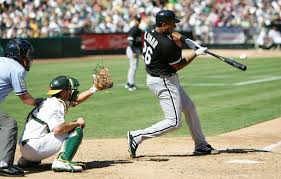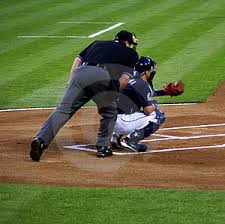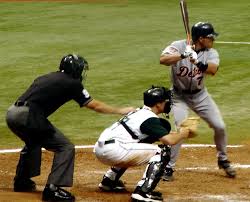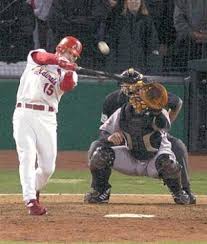Below is taken from an instructor talking about common catching mistakes:
Next, if you advise your catchers to place their closed fist behind their back or knee, I want you to perform a long study using videotape. Videotape every catcher you can find who puts their hand behind their back or knee. At the moment the ball is about 5 feet from the hitting zone, note where the catcher's hand is now located. At least 90% of the time, the catcher will have pulled her hand out from behind her and brought it towards the glove. This is a natural human reaction. Most people cannot help this. Most people cannot be trained to keep the hand back because it is a natural motion to put both hands in front of you in order to protect oneself.
If you force yourself to think about a frontal knife attack, you probably think the best and most natural move would be to dodge the incoming weapon. But, in fact, most people who are attacked like this do not react that way. Instead, what they do is instinctively try to protect themselves by putting up their hands. Obviously your hands and arms are not much defense against an incoming sharp knife. But that is what people do. That is what is commonly discussed as an instance in which the victim "put up a fight." But they put up their hands and arms because the body's most reactive tendency is to protect the vital organs. You can live with injuries to your arms and hands but you cannot live with a knife wound to your vital internal organs and rather than chance the injury and dodge the incoming person, the reflex action is to protect using the extremities.
So catchers are just as ill advised to put their throwing hands behind them as they are to make a punching fist. The first reaction is to pull the hand out from behind you. And when the ball is fouled, you are more likely to be struck. If you have a punching fist, that strike is going to bust a finger. catchers would be better off if they made the catching fist and then placed the throwing hand behind the glove by a few inches. If you watch a catcher who does this, what you will most likely notice is the throwing hand moves in tandem with the glove hand. The "fist" remains behind the glove and protected.
As side notes to this discussion, you do not want the hand right up against the glove because if will absorb shock on hard pitches. rather keep it back those few inches so that when the pitch is caught, it won't be struck by the shock absorbing glove and so that as the glove slows down, the throwing hand will be right there next to the glove. Lastly, the catching fist, with the thumb on the inside, is a much more natural way for the hand to go into the glove to get the ball. Because the four fingers are not tightly wrapped and because the thumb generally springs open immediately upon releasing the fist, it is just a hair quicker.






